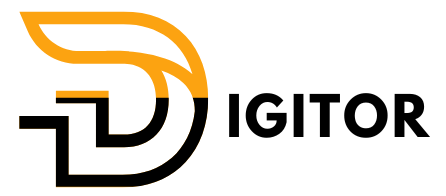Cloudflare Setup Guide: Easy Steps to Secure and Speed Up Your Website
If you’re looking to boost your website’s performance and security, setting up Cloudflare is one of the smartest moves you can make. This Cloudflare setup guide will walk you through the process, step-by-step, ensuring your website is optimized for both speed and protection.
Cloudflare acts as a Content Delivery Network (CDN), DNS manager, and security firewall all in one. It not only helps websites load faster but also shields them against cyber threats like DDoS attacks.
Let’s dive into the complete Cloudflare setup guide!
What is Cloudflare and Why Use It?
Before getting into the setup, it’s important to understand why Cloudflare is beneficial:
-
Website Acceleration: Through a network of global servers (CDN), your website content is delivered faster.
-
Enhanced Security: Protects against malicious attacks and spam.
-
SSL Certificate: Free SSL helps secure your website traffic.
-
DNS Management: Faster and more reliable DNS resolution.
Learn more about Cloudflare’s global CDN network and how it boosts performance.
Step-by-Step Cloudflare Setup Guide
1. Create a Free Cloudflare Account
Start by visiting the Cloudflare website and signing up for a free account.
-
Click Sign Up
-
Enter your email and create a password
-
Confirm your email if prompted
2. Add Your Website to Cloudflare
Once your account is ready:
-
Click “Add a Site”
-
Enter your domain name (e.g., yourwebsite.com)
-
Click Next
Cloudflare will begin scanning your current DNS records.
3. Choose a Cloudflare Plan
For most users, the Free Plan is sufficient to start. However, if you need features like enhanced security and optimization, you can later upgrade to paid plans.
-
Select Free Plan and click Continue
4. Review and Confirm DNS Records
Cloudflare will display your current DNS settings:
-
Ensure all your DNS records (A, CNAME, MX, etc.) are correctly listed.
-
Make adjustments if necessary.
5. Update Nameservers at Your Domain Registrar
After confirming DNS settings, Cloudflare will ask you to update your domain’s nameservers.
If your domain is registered with Namecheap or any other provider:
-
Log in to your registrar account
-
Go to Domain Settings > Manage Nameservers
-
Replace existing nameservers with the Cloudflare-provided ones
Example Cloudflare Nameservers:
-
gina.ns.cloudflare.com -
ivan.ns.cloudflare.com
For a detailed walkthrough, check out Namecheap’s nameserver update guide.
6. Wait for DNS Propagation
After changing nameservers, it might take a few hours (up to 24 hours) for the change to propagate globally.
You’ll receive an email confirmation from Cloudflare once your site is active on their network.
Essential Cloudflare Settings to Enable
Always Use HTTPS
-
Go to SSL/TLS > Edge Certificates
-
Toggle Always Use HTTPS to ON
This ensures all visitors access your site securely.
Auto Minify
-
Navigate to Speed > Optimization
-
Enable Auto Minify for HTML, CSS, and JavaScript
Minification reduces file size and improves load times.
Rocket Loader
-
Still under Speed > Optimization, enable Rocket Loader™
-
Improves page load time by optimizing JavaScript loading
Caching Settings
-
Set Browser Cache Expiration to 1 month under Caching > Configuration
-
Enable Tiered Caching to improve cache hit ratios
Troubleshooting Common Cloudflare Issues
If your website isn’t displaying correctly after setup, here are a few things to check:
-
Clear your browser cache or try opening your site in incognito mode.
-
Check SSL/TLS settings if you encounter security errors.
-
Disable Rocket Loader temporarily if JavaScript-heavy pages break.
Still stuck? Feel free to contact Digitor’s expert support for quick help.
Final Thoughts
Setting up Cloudflare isn’t just about security—it’s about improving your site’s speed, reliability, and SEO. By following this Cloudflare setup guide, even beginners can confidently configure Cloudflare and reap the benefits.
Start with the free plan and explore advanced features as your website grows. Good luck securing and accelerating your online presence!






